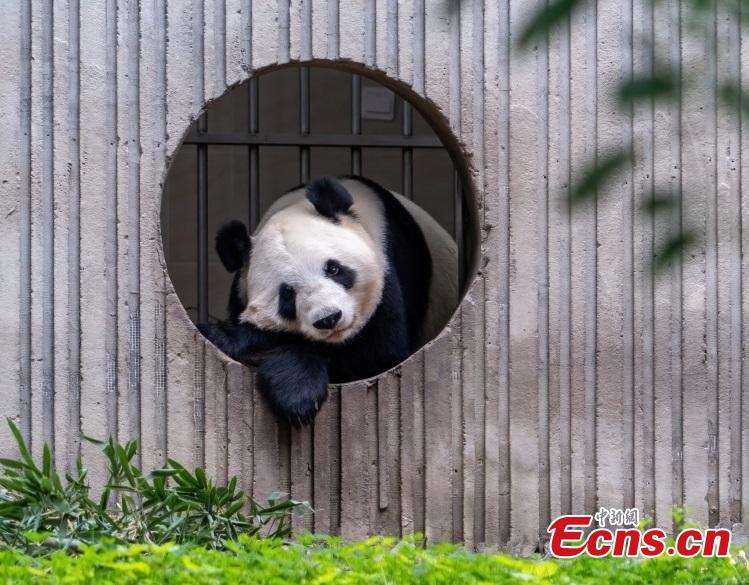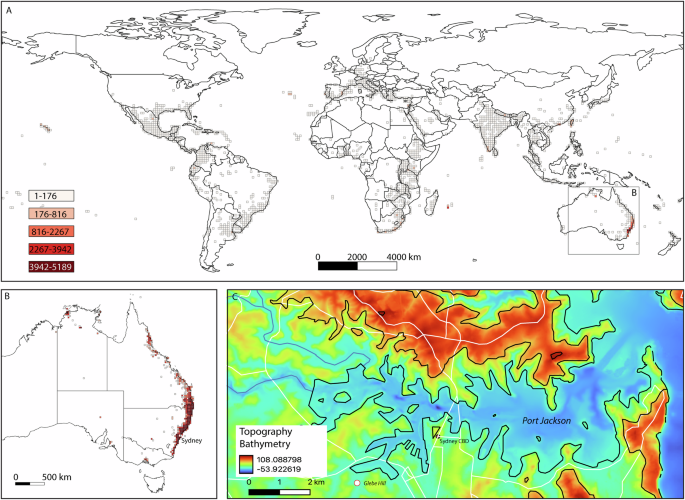Report on Giant Panda Conservation Efforts in Relation to Sustainable Development Goals
Observation Details
- Species: Giant Panda (Ailuropoda melanoleuca)
- Location: Shenshuping Giant Panda Base, Wolong National Nature Reserve, Sichuan Province, China
- Date of Observation: October 21, 2025
- Status: The subject was observed in a state of leisure, indicating a secure and well-managed habitat that supports the species’ well-being.
Analysis of Contribution to Sustainable Development Goals (SDGs)
The conservation efforts exemplified by the Wolong National Nature Reserve and its inhabitants, such as the giant panda, make a direct and significant contribution to several United Nations Sustainable Development Goals.
-
SDG 15: Life on Land
This goal, which aims to protect, restore, and promote the sustainable use of terrestrial ecosystems and halt biodiversity loss, is central to the reserve’s mission.
- Target 15.1: The establishment and maintenance of the Wolong National Nature Reserve ensure the conservation and sustainable use of terrestrial freshwater ecosystems.
- Target 15.5: The protection of the giant panda, a formerly endangered and now vulnerable species, is a direct action to reduce the degradation of natural habitats, halt the loss of biodiversity, and prevent the extinction of threatened species.
- Target 15.7: Efforts at the reserve combat poaching and trafficking of protected species.
-
SDG 13: Climate Action
Protecting large forest ecosystems is a critical strategy for climate change mitigation.
- The vast bamboo forests within the reserve act as a significant carbon sink, absorbing atmospheric carbon dioxide and contributing to global climate regulation.
- Maintaining healthy ecosystems enhances resilience to climate-related hazards and natural disasters.
-
SDG 11: Sustainable Cities and Communities
Conservation initiatives contribute to the protection of cultural and natural heritage.
- Target 11.4: The Wolong Reserve is part of the Sichuan Giant Panda Sanctuaries, a UNESCO World Heritage Site, representing a concerted effort to strengthen and safeguard the world’s natural heritage.
-
SDG 17: Partnerships for the Goals
The success of giant panda conservation is a testament to effective global collaboration.
- The program involves multi-stakeholder partnerships between the Chinese government, international conservation organizations, scientific research institutions, and local communities, embodying the collaborative approach required to achieve the SDGs.
Analysis of SDGs, Targets, and Indicators
1. Relevant Sustainable Development Goals (SDGs)
-
SDG 15: Life on Land
This is the primary SDG addressed in the article. The text focuses on the conservation of a specific species, the giant panda, within a designated protected area, the Wolong National Nature Reserve. This directly aligns with SDG 15’s objective to “protect, restore and promote sustainable use of terrestrial ecosystems… and halt biodiversity loss.” The existence of the panda base and the nature reserve are concrete examples of actions taken to protect life on land.
2. Specific Targets Identified
-
Target 15.1: By 2020, ensure the conservation, restoration and sustainable use of terrestrial and inland freshwater ecosystems and their services, in particular forests, wetlands, mountains and drylands, in line with obligations under international agreements.
The article’s mention of the “Wolong National Nature Reserve” directly relates to this target. A national nature reserve is a key mechanism for ensuring the conservation of terrestrial ecosystems and the biodiversity they support, such as the habitat of the giant panda.
-
Target 15.5: Take urgent and significant action to reduce the degradation of natural habitats, halt the loss of biodiversity and, by 2020, protect and prevent the extinction of threatened species.
This target is addressed through the focus on the “giant panda,” a species that has been the subject of major conservation efforts to prevent its extinction. The “Shenshuping giant panda base” within the reserve is a specific, significant action aimed at protecting this threatened species and its habitat, thereby working to halt biodiversity loss.
3. Indicators for Measuring Progress
-
Indicator 15.1.2: Proportion of important sites for terrestrial and freshwater biodiversity that are covered by protected areas, by ecosystem type.
The article implicitly refers to this indicator by naming the “Wolong National Nature Reserve.” This reserve is an example of a protected area that covers an important site for terrestrial biodiversity, specifically the natural habitat of the giant panda. The existence and mention of the reserve serve as a qualitative data point for this indicator.
-
Indicator 15.5.1: Red List Index.
This indicator is implied by the focus on the “giant panda.” The Red List Index, maintained by the IUCN, tracks the conservation status of species. The efforts described in the article—maintaining a panda base within a nature reserve—are actions that directly contribute to improving the conservation status of the giant panda, which would be reflected in the Red List Index.
Summary Table
4. SDGs, Targets, and Indicators
| SDGs | Targets | Indicators |
|---|---|---|
| SDG 15: Life on Land | 15.1: Ensure the conservation, restoration and sustainable use of terrestrial and inland freshwater ecosystems and their services. | 15.1.2: Proportion of important sites for terrestrial and freshwater biodiversity that are covered by protected areas (Implied by the mention of “Wolong National Nature Reserve”). |
| SDG 15: Life on Land | 15.5: Take urgent and significant action to… protect and prevent the extinction of threatened species. | 15.5.1: Red List Index (Implied by the focus on the “giant panda,” a species tracked by the Red List). |
Source: ecns.cn






